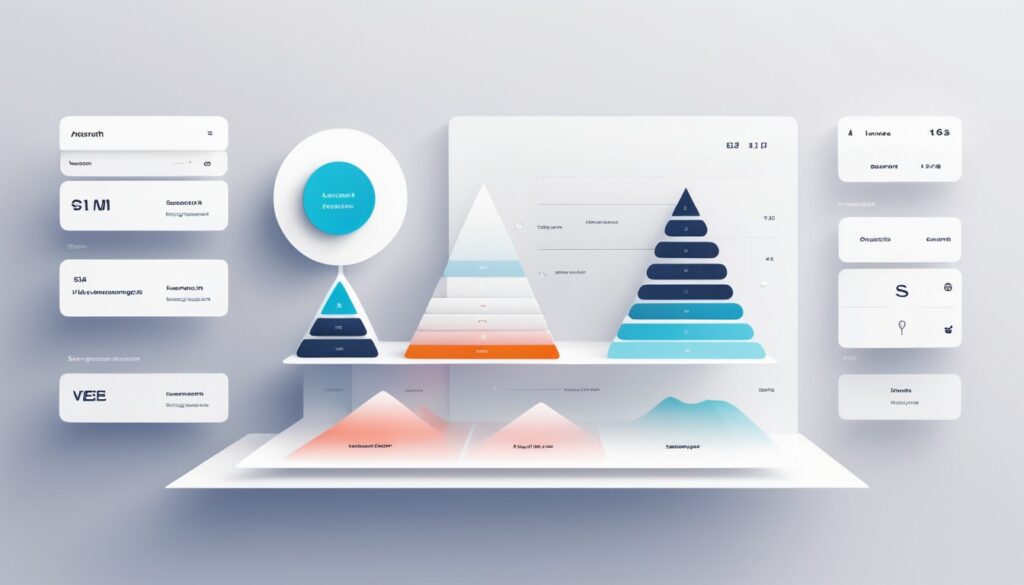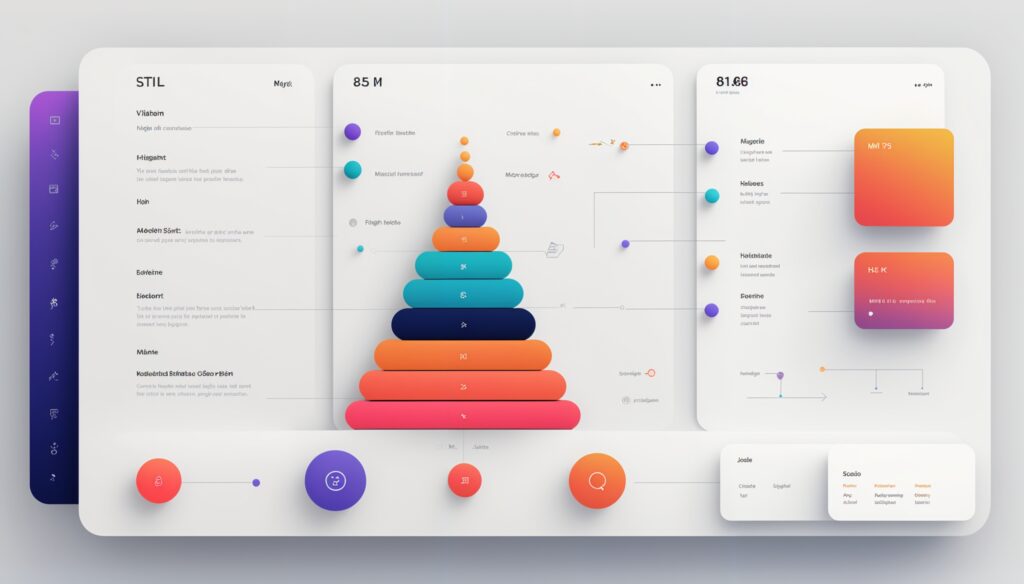Visual design plays a crucial role in shaping the user experience and perception of a product or website. As UX designers, understanding the principles behind effective visual design can significantly impact the success of our projects. Let’s delve into the six essential visual design principles that every UX designer should be aware of:
1. Hierarchy and Balance: Guiding the User’s Eye

Imagine a website where everything is vying for your attention. It’s overwhelming, right? Visual hierarchy establishes a clear order of importance, guiding the user’s eye towards the most critical information first. This can be achieved through:
- Size and Scale: Larger elements naturally draw attention.
- Color and Contrast: High-contrast elements stand out.
- Whitespace: Negative space creates breathing room and emphasizes key elements.
Remember, a balanced composition is visually pleasing and avoids overwhelming the user.
Smart people learn from everything and everyone, average people from their experiences, stupid people already have all the answers.
sai kamal
2. White Space: Your Unsung Hero

minimalist website layout with ample white space
White space (or negative space) is often overlooked, but it’s a powerful design tool. It provides visual breathing room, prevents clutter, and draws attention to the content. Think of it as the air that allows your design elements to breathe.
3. Color Psychology: Evoking Emotions and Actions
Colors have the power to evoke emotions and influence user behavior. For instance, blue often signifies trust and security, while red conveys urgency or excitement. Understanding color psychology allows you to:
- Set the mood: Create a calming or energetic atmosphere.
- Highlight calls to action: Make buttons and important elements stand out.
- Enhance brand recognition: Use your brand’s color palette consistently.
4. Consistency: Building User Trust

website with consistent design elements like fonts, colors, and layout across different pages
Consistency builds trust and familiarity. When users encounter a consistent design language throughout their experience, they feel comfortable and know what to expect. This includes:
- Font styles and sizes: Maintain a consistent font family and hierarchy.
- Color palette: Use a limited and defined color palette throughout.
- Layout and navigation: Keep the overall layout and navigation structure consistent across pages.
5. Accessibility: Designing for Everyone

website with highcontrast text, alt text descriptions for images, and clear navigation elements
Accessibility ensures that everyone, regardless of ability, can access and use your design. This includes:
- Color contrast: Ensure sufficient contrast between text and background colors for clear readability.
- Alt text descriptions: Provide alternative text descriptions for images to aid users with visual impairments.
- Keyboard navigation: Allow users to navigate the interface using only their keyboard.
6.Storytelling: Connecting with Users on an Emotional Level

Visual design can be a powerful storytelling tool. By using visuals strategically, you can evoke emotions, create a narrative, and connect with users on a deeper level. This can be achieved through:
- Imagery: Use high-quality, relevant images that resonate with your target audience.
- Video: Videos can be highly engaging and effectively communicate complex information.
- Microinteractions: Subtle animations and transitions can add personality and delight to the user experience.
Conclusion: Mastering the Art of Visual Design
By incorporating these six visual design principles into your UX design process, you can create interfaces that are not only visually appealing but also intuitive, user-friendly, and impactful. Remember, the goal is to guide users seamlessly through their journey, leaving them with a positive and memorable experience.
Hashkaro Digitals: We are a team of passionate UX designers who understand the power of visual communication. We believe that effective visual design is an essential element of creating exceptional user experiences. Contact us today to learn how we can help you elevate your digital products and services.
Very interesting subject, appreciate it for putting up.Blog money